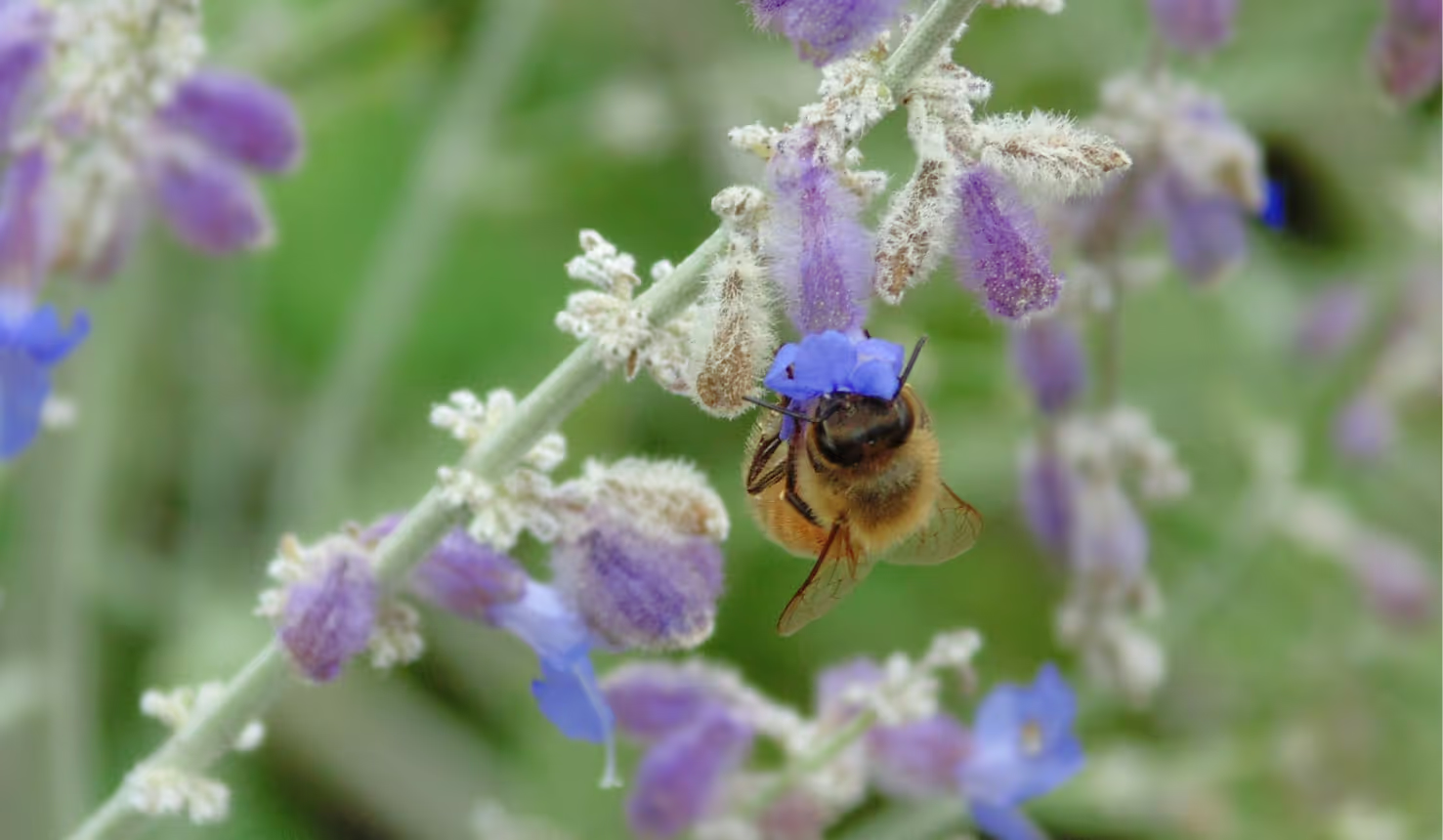Beyond Honey Bees: The Plight of Wild Bees and What We Can Do to Help

Join the community





The terms "honey bee" and "bee" have become synonymous, but not all bees are honey bees. There are approximately 4000 native species of bees, many of which do not have queens or produce honey.
The bees we commonly see on farms that produce honey are Apis mellifera, a species that's not native to the U.S. They were brought from Europe to the Americas in the 17th century. So how do honey bees fit into our ecosystems and how are they different from native, wild bees?
How are honey bees different from native bees?
While both honey bees and native bees help with pollination, flowers pollinated by native bees produce fitter offspring than flowers pollinated by honey bees. Honey bees visit fewer plants and deposit pollen on the same plant, while native bees spread their pollen to other plants, resulting in more diverse offspring.
Scientists have also examined the seeds of plants pollinated by both species and concluded that the ones pollinated by native bees were two to five times fitter. It looks like we need more native bees than honey bees for optimal pollination.
The climate crisis is impacting the bee population
Changes in land usage, exposure to pesticides, and more vulnerable and volatile weather conditions due to climate change are causing bee health problems. These factors impact the nonnative species like the honey bee and all the other native species.
While we saw that non-native species are better pollinators, the conservation efforts have mainly been focused on honey bees. There’s a whole industry that’s making sure that the European honey bee populations don’t decline. In fact, their population has increased by 10% since 2006.
More effort should be put into saving native bees vs. honey bees
Many commercial datasets only take the honey bee population into account, but different localized databases indicate that the native bee population is on the decline.
Native bees play an incredibly important role as pollinators for home gardens and crops that honey bees can’t pollinate. Crops like tomatoes, eggplants, and peppers require buzz pollination where bees have to vibrate their bodies to shake the pollen free. Honeybees cannot do this.
The rise of the honey bee population can be a problem for native bees, especially in landscapes where flowering plants are limited. In these areas, native insects compete with honey bees for pollen and nectar. As a result, they may have to travel farther to forage and ultimately gather less food for their young.
Plus, some native bees only collect pollen from one or a handful of flowers; unlike honey bees, these species can’t easily switch from one source of food to another as pollen runs low.
You can also support the growth of native bees by turning your lawns into a native garden, that can act as a pollinator garden for these bees.










.png)


